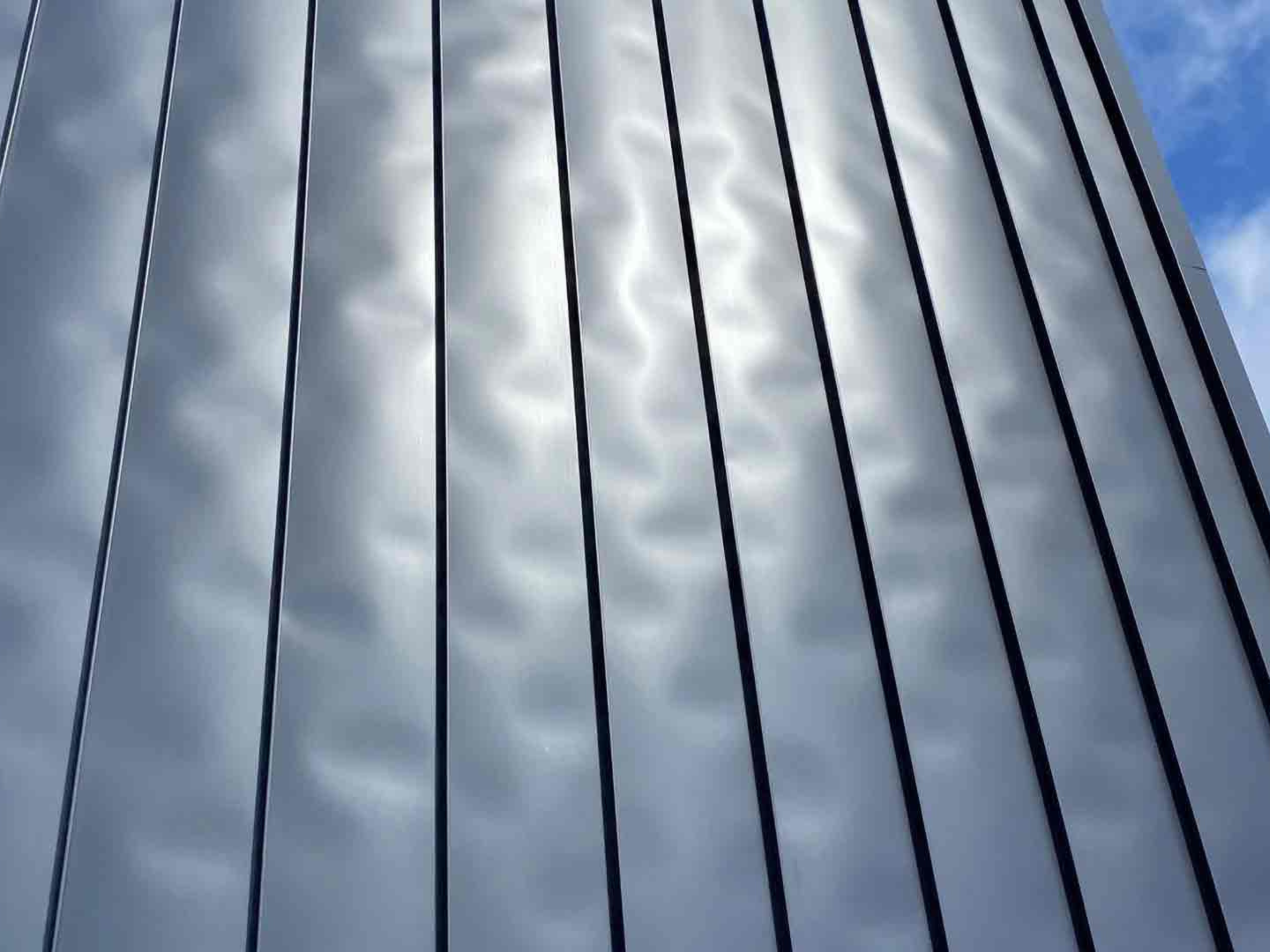
Oil canning is defined as visible waviness in the flat areas of metal roofing and wall panels. It can occur in any type of metal panel: steel, aluminum, zinc, or copper. Although oil canning rarely compromises the structural integrity of a roof, it can still impact the overall appearance of a project. Factors such as the time of year, viewing angle, and the angle at which the sunlight strikes the panel can make oil canning more noticeable. While it can’t always be completely prevented, the best way to combat oil canning is by understanding what causes it and how to minimize it.
Below are several factors that can contribute to oil canning in metal panels:
1. Substrate and Framing Irregularities
Uneven or improperly aligned substrates can force panels to conform to surface imperfections. If the structure underneath isn’t flat or level, it may distort the metal panel once it’s fastened into place, resulting in visible waves.
2. Panel Design and Width
Wider, flatter panels are more susceptible to oil canning because they lack the structural rigidity provided by ribs or striations. Additionally, panels without stiffening features in their design are more likely to show distortions.
3. Metal Thickness
Thinner metal gauges are more prone to oil canning. Thicker metal provides more resistance to surface tension and handling damage, making it a more stable option for projects where appearance is a priority.
4. Improper Handling and Storage
Metal panels can be damaged before they even reach the jobsite. Mishandling during manufacturing, transportation, or installation – such as bending, over-stacking, or dragging panels – can create stresses that appear as oil canning once the panels are installed.
5. Thermal Expansion and Contraction
Metal expands and contracts with temperature changes. If panels are fastened too tightly or without allowance for thermal movement, this natural expansion can create internal stress that leads to oil canning over time.
6. Installation Errors
Incorrect fastening techniques, including over-torquing fasteners or misaligning clips, can introduce stress points that distort the panel’s surface. Even high-quality panels can show signs of oil canning if not installed properly.
7. Finish and Reflectivity
High-gloss and light-colored finishes tend to highlight surface irregularities more than matte or textured finishes.
Conclusion
Understanding what causes oil canning is the first step in reducing its appearance. While it may not always be completely avoidable, there are several strategies that can significantly reduce its impact. Check out our blog post on how to minimize oil canning so you can achieve the clean, smooth look your project deserves.





Recent Comments